It looks like you're using an Ad Blocker.
Please white-list or disable AboveTopSecret.com in your ad-blocking tool.
Thank you.
Some features of ATS will be disabled while you continue to use an ad-blocker.
share:
I've been attending the 225th AAS meeting here in Seattle this week. I'm posting this quick between attending sessions on Exoplanets and Public
Outreach as well as how to develop my 30 second value statement aka my "elevator pitch".
Yesterday brought exciting news of the longevity of oceans on SuperEarth worlds.
Today brings a massive haul of 6 new habitable zone planets, 8 worlds total, including two of which have the highest ESI (Earth Similarity Index) yet at.
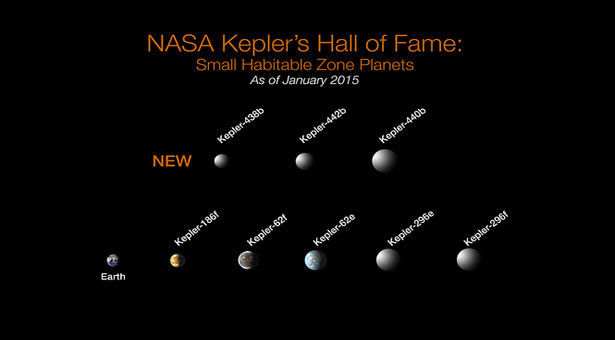
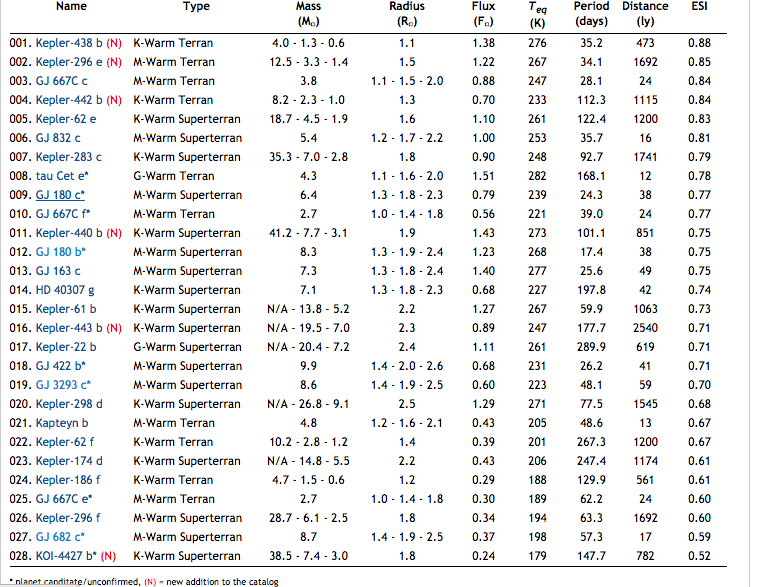
The top planet Kepler 438 b is only 12% larger than Earth and it orbits an orange-red K-dwarf star smaller and cooler than our Sun but not quite as small and cool as an M-dwarf so the planet need not orbit so close as to become tidally locked (one side permanently facing the star).
Unfortunately like most Kepler planets these all lay fairly distant. The best one is also the nearest one at 473 light years away. The furthest from them is a 2,500 light years away.
But the takeaway here is that small rocky planets like the Earth in orbits which are not too hot and not too cold for liquid water to exist are pretty commonplace. This bodes well to the followup mission to Kepler called TESS (Transiting Exoplanet Survey Satellite) which launches in 2 years and will examine all the nearest stars using the same technique NASA's successful Kepler mission has used. It is estimated that between 130-160 planets like these orbit stars within 32 light years of Earth. TESS and other missions like Europe's PLATO mission will try to locate them for further examination by James Webb Space Telescope and a future missions.
I see the articles have already appeared so here are some excerpts:
Two new exoplanets are more Earth-like than any we’ve found before - Washinton Post
And this: NASA closer than ever to finding Earth’s ‘twin’ -The International News Pakistan
And from the Planetary Habitability Laboratory at the University of Puerto Rico at Arecibo:
Stay tuned throughout the week, there may be other interesting stories from the conference. I'll try to post and highlight them here on ATS.
Yesterday brought exciting news of the longevity of oceans on SuperEarth worlds.
Today brings a massive haul of 6 new habitable zone planets, 8 worlds total, including two of which have the highest ESI (Earth Similarity Index) yet at.


The top planet Kepler 438 b is only 12% larger than Earth and it orbits an orange-red K-dwarf star smaller and cooler than our Sun but not quite as small and cool as an M-dwarf so the planet need not orbit so close as to become tidally locked (one side permanently facing the star).
Unfortunately like most Kepler planets these all lay fairly distant. The best one is also the nearest one at 473 light years away. The furthest from them is a 2,500 light years away.
But the takeaway here is that small rocky planets like the Earth in orbits which are not too hot and not too cold for liquid water to exist are pretty commonplace. This bodes well to the followup mission to Kepler called TESS (Transiting Exoplanet Survey Satellite) which launches in 2 years and will examine all the nearest stars using the same technique NASA's successful Kepler mission has used. It is estimated that between 130-160 planets like these orbit stars within 32 light years of Earth. TESS and other missions like Europe's PLATO mission will try to locate them for further examination by James Webb Space Telescope and a future missions.
I see the articles have already appeared so here are some excerpts:
Two new exoplanets are more Earth-like than any we’ve found before - Washinton Post
NASA's Kepler Space Telescope has found a lot of planets outside our solar system, but now it may have tracked down a pair that are truly Earth-like.
Scientists recently verified Kepler's 1,000th planetary discovery, and there are still more to sort through. At a meeting of the American Astronomical Society on Tuesday, researchers announced 554 new candidates found by the telescope, bringing its total to 4,175.
Of those possible planets, eight are in the so-called "Goldilocks zone," or habitable zone, where the host star is at just the right distance to keep water liquid. Too close, and water heats up and boils off. Too far, and the planet is covered in permanent, solid ice.
These findings nearly double the number of known planets in the habitable zone, but researchers are especially excited about two of the new exoplanets: Their size, location, and star type means they could be rocky planets like Earth -- which means they could have evolved life as we recognize it.
And this: NASA closer than ever to finding Earth’s ‘twin’ -The International News Pakistan
The discovery doubles the number of known planets that are close in size to the Earth and believed to be in the so-called "Goldilocks zone" of the stars they orbit.
"We are now closer than we have ever been to finding a twin for the Earth around another star," said Fergal Mullally of the Kepler Science Office.
"These candidates represent the closest analogs to the Earth´s own system found to date."
The worlds were found with the help of NASA´s planet-hunting Kepler mission, a space telescope which has scoured more than 150,000 stars for planets beyond our solar system since its launch in 2009.
The latest trove of candidate planets found by Kepler and announced Tuesday was 554, bringing the total potential planets to 4,175.
Scientists have recently verified the existence of the 1,000th planet found by Kepler.
"Three of the newly validated planets are located in their distant suns´ habitable zone, the range of distances from the host star where liquid water might exist on the surface of an orbiting planet," NASA said in a statement.
"Of the three, two are likely made of rock, like Earth."
And from the Planetary Habitability Laboratory at the University of Puerto Rico at Arecibo:
Last Update: January 6, 2015
Six NASA Kepler planets were added to the Habitable Exoplanets Catalog. One is Kepler-296 e, already confirmed in 2014, after revised properties. Kepler-438 b, Kepler-440 b, Kepler-442 b, Kepler-442 b are new confirmed planets while KOI-4427 b is still unconfirmed. Kepler-438 b and Kepler-296 e are now two of the most Earth-like planets based on insolation and size alone.
Stay tuned throughout the week, there may be other interesting stories from the conference. I'll try to post and highlight them here on ATS.
edit on 6-1-2015 by JadeStar because: (no reason given)
Mmmkay who wwans to build a spaceship with me and explore! 1 at a time please..
I wonder what or who is alive on those planets. Maybe its like avatar
I wonder what or who is alive on those planets. Maybe its like avatar
originally posted by: Annunak1
Mmmkay who wwans to build a spaceship with me and explore! 1 at a time please..
I wonder what or who is alive on those planets. Maybe its like avatar
Great that you brought up Avatar.
Today I learned that it may be possible for us to take an infrared image of a warm exomoon (moon around another planet) if that exomoon orbits a gas giant planet around other stars in orbits similar to Jupiter or Saturn in our own solar system.
Such moons experience tidal heating and that heat makes them stand out in the infrared against the cold depths of space that far away from their star. So a tidally heated moon about the size of our Earth with an atmosphere and surface water (ala Avatar) could be detected.
So the search for "Avatar" is on. There's a good chance we might take pictures of an "Avatar" before taking pictures of a "Vulcan"
As far as going to these planets discovered today, even at the speed of light it would take almost 500 years to get to the nearest one. However, they are important because their commonality tells us that there are probably more than a couple in our backyard.
edit on 6-1-2015 by JadeStar
because: (no reason given)
originally posted by: JadeStar
So the search for "Avatar" is on.
Just to clarify, the name of the planet from "Avatar" was "Pandora", not "Avatar".
Also, Pandora was portrayed as being in the Alpha Centauri system.
edit on 6-1-2015 by Junkheap because: (no reason given)
a reply to: JadeStar
If we are ever going to be able to actually travel to these planets it going to have to be wormhole technology considering even at several multiples the speed of light some of them are 100s and 1000s of years away.
Im just amazed at how they find the things!
If we are ever going to be able to actually travel to these planets it going to have to be wormhole technology considering even at several multiples the speed of light some of them are 100s and 1000s of years away.
Im just amazed at how they find the things!
edit on 6-1-2015 by andy06shake because: (no reason given)
a reply to: JadeStar
I just read an article about this and came to post but I am not surprised you beat me to it!
Both sound very interesting and, for now, we can only imagine and dream about what these planets look like, what is living on them (if anything) and what they're made up of.
Hopefully in my lifetime they'll find the answer to the light year/distance and deep space exploration problems giving us mere Earthlings a chance to check these alien worlds out for real!
I just read an article about this and came to post but I am not surprised you beat me to it!
Both sound very interesting and, for now, we can only imagine and dream about what these planets look like, what is living on them (if anything) and what they're made up of.
Hopefully in my lifetime they'll find the answer to the light year/distance and deep space exploration problems giving us mere Earthlings a chance to check these alien worlds out for real!
originally posted by: Junkheap
originally posted by: JadeStar
So the search for "Avatar" is on.
Just to clarify, the name of the planet from "Avatar" was "Pandora", not "Avatar".
Also, Pandora was portrayed as being in the Alpha Centauri system.
That's right!
Oh, BTW there was another discovery announced at AAS this week, it was overshadowed by other news but a gas giant planet called HD 145934 b which is twice the mass of Jupiter was discovered by the California Planet Search team (using radial velocity measurements on ground based telescopes) orbiting a giant K0 star (HD 145934 b) in a 7.5 year orbit. This is roughly equivalent to where Jupiter orbits our Sun.
What is intriguing about this is that orbit is smack in the middle of the stars habitable zone so a large moon could be thermally heated by the star with no tidal heating by the planet necessary. Such a moon might be larger than the ones orbiting Jupiter, perhaps even Earth size since the planet it orbits contains twice the mass of Jupiter (meaning there was likely more material available to form larger moons along with the larger planet when it formed).

So yea, Pandora could exist. Or Endor.
Here's a visualization I worked up using the orbital and stellar details (from the paper linked above) of what a sunset (well technically an HD 145934-set ) on such a habitable moon orbiting the planet HD 145934 b might be like:
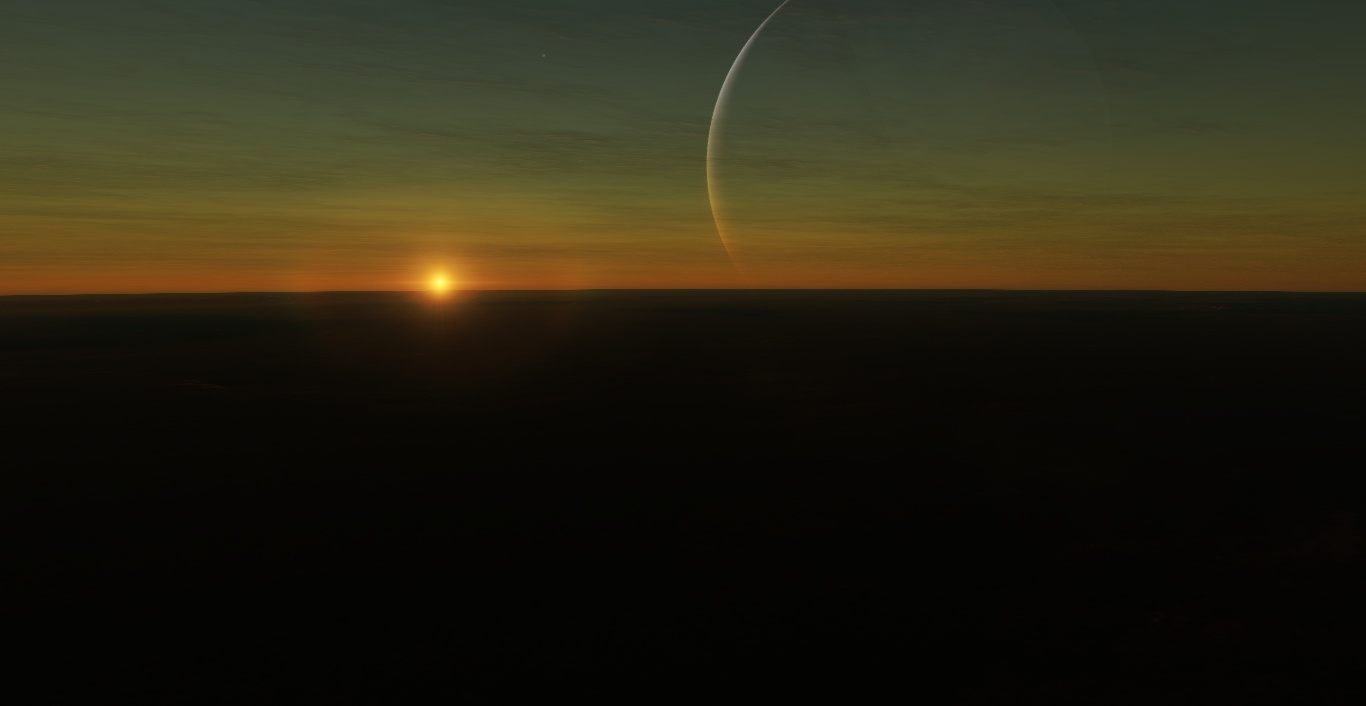
Pretty isn't it?
edit on 6-1-2015 by JadeStar because: (no reason given)
originally posted by: haven123
they are real creative names they have given them...
Well they are scientific names as a result of the catalog they belong to usually Kepler, Gliese, Henry-Draper (HD), Hipparcos (HIP), 2 Micron All Sky Survey (2MASS), United States Naval Observatory (USNO) etc.
More common names would be great for the public though and if you think you can do better well then have a go at it here.
The Process
July 2014: a list of 305 well-characterized exoplanets discovered prior to 31 December 2008, is selected for public naming by the International Astronomical Union (IAU) upon the recommendation of its Working Group Exoplanets for the Public. These exoplanets belong to 260 exoplanetary systems comprising one to five members, in addition to the host star. These systems and their host star together are here referred to as ExoWorlds. Their list is published on the NameExoWorlds.org website.
October 2014: an IAU Directory for World Astronomy website (directory.iau.org) allows astronomy clubs and non-profit organisations interested in naming these ExoWorlds to register. The IAU will have the capability to handle the registration of thousands of such groups. Registration is compulsory.
January 2015: clubs or non-profit organisations vote for the 20–30 top ExoWorlds they wish to name out of the list provided by the IAU. The actual number will depend on how many groups have registered.
February 2015: clubs or non-profit organisations send in proposals for the names of members of these selected ExoWorlds (including the host star), based on the rules in the IAU Exoplanet Naming Theme, together with a detailed supporting argument for their choice. Each group is allowed to name only one ExoWorld. More details on this stage will be given later.
April 2015: the general public votes to rank the proposed names. The IAU and Zooniverse will be ready to handle a million votes or more worldwide.
July 2015: the IAU, via its Executive Committee Working Group on the Public Naming of Planets and Planetary Satellites, oversees the final stages of the contest, and validates the winning names from the vote.
3–14 August 2015: the results are announced at a special public ceremony held during the IAU XXIX General Assembly in Honolulu, USA.
BTW: I am part Native American (a part of the Chinook) and I've been interesting the local tribal council in registering to submit names from First Nations history and lore. This makes sense since many of these planets are discovered either in the USA or by USA spacecraft and astronomy has pretty much run out of Greek, Roman, Egyptian and Norse names.
edit on 7-1-2015 by JadeStar because: (no reason given)
originally posted by: lovebeck
a reply to: JadeStar
I just read an article about this and came to post but I am not surprised you beat me to it!
I had an unfair advantage being at the conference when they were announced
Both sound very interesting and, for now, we can only imagine and dream about what these planets look like, what is living on them (if anything) and what they're made up of.
Yes, for these ones it will be hard to gather much more on them due to their distance from us but the closer ones we discover starting in 2017 with TESS we won't have to imagine what they look like for long because they will be close enough for the JWST, E-ELT, and Thirty Meter Telescope to examine closely and a future mission using a starshade to directly image and a next-gen space telescope to map.
We already know of one nearby one (Tau Ceti e) which is just 12 light years away:
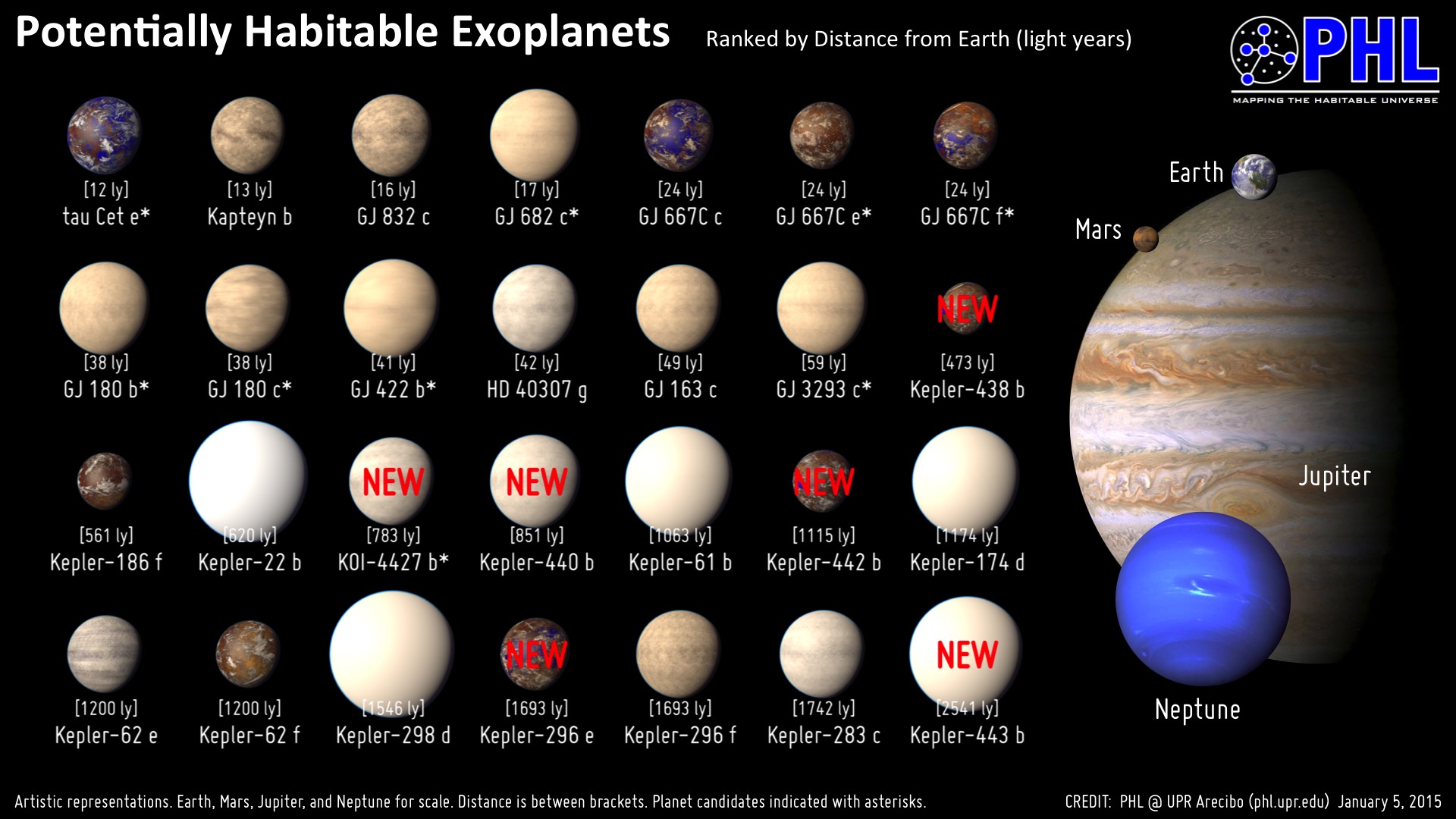
Hopefully in my lifetime they'll find the answer to the light year/distance and deep space exploration problems giving us mere Earthlings a chance to check these alien worlds out for real!
Well if you can stay alive for another 30-40 years we'll probably start mapping the closer ones.
From this NASA Astrophysics Roadmap:

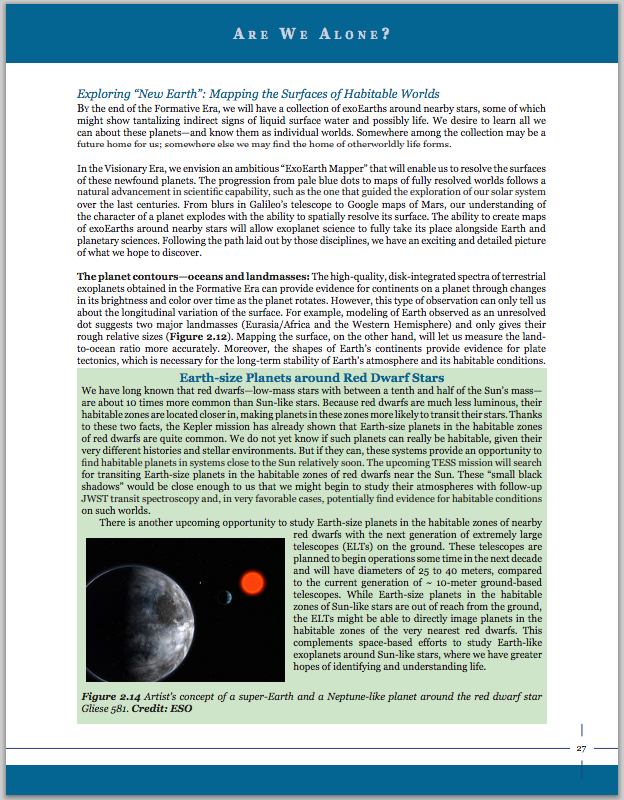
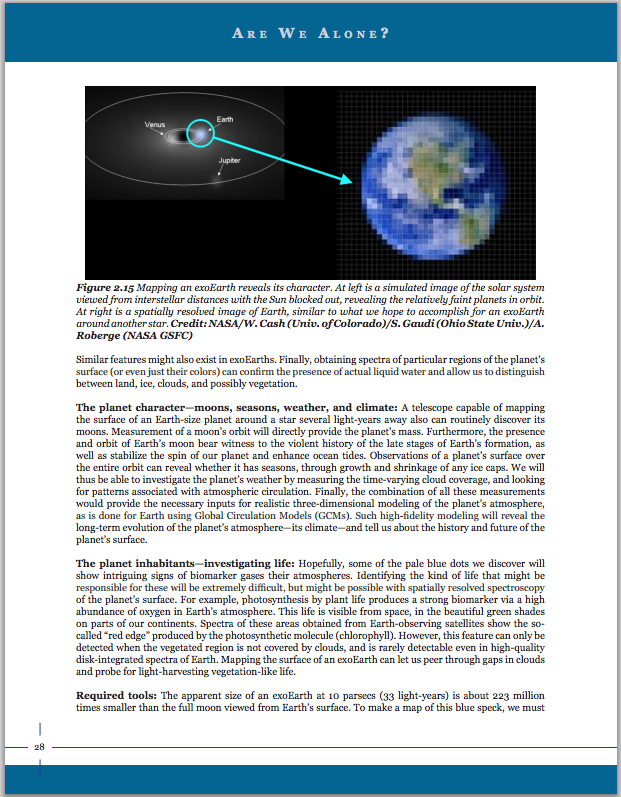
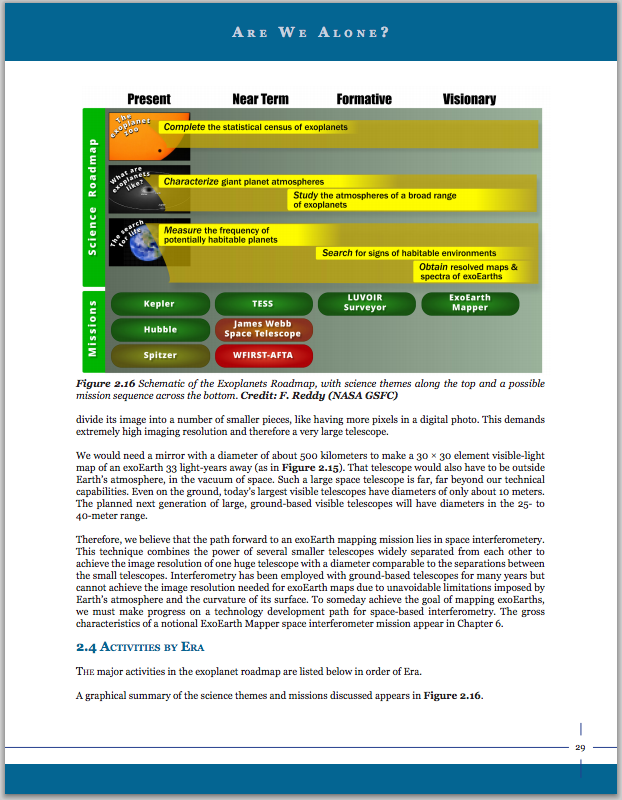
BTW: There will probably be another announcement later this year of "The Most Earthlike Exoplanet Ever" because as nice as these ones are Kepler has found a number of candidates with even higher ESI (Earth Similarity Index) numbers. As high as 98%!!
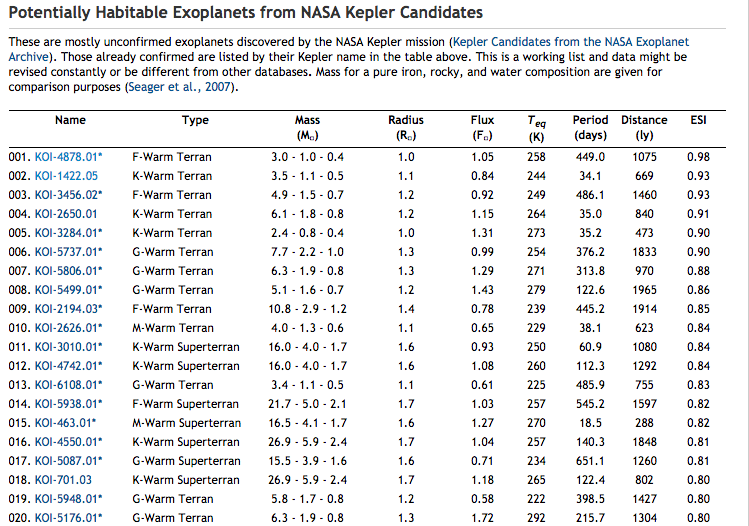
Rumor has it that the top candidate (KOI 4878.01) will be confirmed this summer.
edit on 7-1-2015 by JadeStar because: (no reason
given)
We need to radically and seriously change our politics
and politians. With everything going on on THIS planet,
LEAVING is the ONLY option to save our selfs..
If we could do that, the habitability on THIS planet would
be extended and WE as in mankind would survive.
And it doesnt matter what you/ppl say about
physics that dont exist powersources or
MONEY.... I dont buy it anymore...
FEAR is the only one thing that stand in our way.......
The rest are mearly speedbumps on the road ahead.....
Star and Flag for you as is for your findings Jade..
Keep up the search
and politians. With everything going on on THIS planet,
LEAVING is the ONLY option to save our selfs..
If we could do that, the habitability on THIS planet would
be extended and WE as in mankind would survive.
And it doesnt matter what you/ppl say about
physics that dont exist powersources or
MONEY.... I dont buy it anymore...
FEAR is the only one thing that stand in our way.......
The rest are mearly speedbumps on the road ahead.....
Star and Flag for you as is for your findings Jade..
Keep up the search
edit on 2015/1/7 by Miccey because: (no reason given)
Archive from the AAS website of the press conference.
Also of interest to fans of alien planets, here's an update on the Starshade direct imaging mission development:
And WFIRST and ATLAST
Also of interest to fans of alien planets, here's an update on the Starshade direct imaging mission development:
And WFIRST and ATLAST
originally posted by: andy06shake
a reply to: JadeStar
If we are ever going to be able to actually travel to these planets it going to have to be wormhole technology considering even at several multiples the speed of light some of them are 100s and 1000s of years away.
Not really, If you take into account time dilution a trip at 1G acceleration to a star 1000 LY away would take you 13.4 years to complete (most of that time is spent accelerating and decelerating). Sadly we wouldn't be here to parade you on your return, we'd be long dead.
This link works out the times.
a reply to: glend
Aside from colonisation then there would be no realistic point to making the journey to other stars utilising such propulsion methods. Simply because a return journey, trade and even communications would be impossible, or at least very long term from our perspective back on Earth. Hence the need for instantaneous or near instantaneous methods of travel aka wormholes or the ability to generate such.
We are never going to go to these places unless there is something in it for us simply because the resources involved to undertake such a journey would be far too great a strain on our own planet. Not to mention the fact that the technology in it entirety does not exist yet(Or so we are lead to believe).
Aside from colonisation then there would be no realistic point to making the journey to other stars utilising such propulsion methods. Simply because a return journey, trade and even communications would be impossible, or at least very long term from our perspective back on Earth. Hence the need for instantaneous or near instantaneous methods of travel aka wormholes or the ability to generate such.
We are never going to go to these places unless there is something in it for us simply because the resources involved to undertake such a journey would be far too great a strain on our own planet. Not to mention the fact that the technology in it entirety does not exist yet(Or so we are lead to believe).
edit on 8-1-2015 by andy06shake because: (no reason given)
a reply to: andy06shake
Point taken. But if the expense wasn't prohibitive a generation might outlay the funds for a probe for the benefit of future generations.
added... what if speed of light is not a speed barrier at all but a time barrier (which might also explain why we see nothing travelling faster than light). If its possible to punch through the speed of light then time itself might reverse. If so , there might be a goldilocks speed that maintains universal time, so travelling to star 1000 LY takes 13 1/2 years for travellers and observers.
Point taken. But if the expense wasn't prohibitive a generation might outlay the funds for a probe for the benefit of future generations.
added... what if speed of light is not a speed barrier at all but a time barrier (which might also explain why we see nothing travelling faster than light). If its possible to punch through the speed of light then time itself might reverse. If so , there might be a goldilocks speed that maintains universal time, so travelling to star 1000 LY takes 13 1/2 years for travellers and observers.
edit on 8 1 2015 by glend because:
addition
originally posted by: glend
a reply to: andy06shake
Point taken. But if the expense wasn't prohibitive a generation might outlay the funds for a probe for the benefit of future generations.
added... what if speed of light is not a speed barrier at all but a time barrier (which might also explain why we see nothing travelling faster than light). If its possible to punch through the speed of light then time itself might reverse. If so , there might be a goldilocks speed that maintains universal time, so travelling to star 1000 LY takes 13 1/2 years for travellers and observers.
Its a physical barrier in that it is a barrier imposed by physics.
As mass approaches the speed of light it becomes effectively more massive requiring more energy to accelerate at 99.999999999999999% of the speed of light you would need like infinite energy to accelerate any further.
a reply to: glend
"If its possible to punch through the speed of light then time itself might reverse."
Then stuff going to the toilet on that journey. LoL
Joking aside we will never know for sure until we are able to achieve FTL travel and to do so we really need a reason other than just because we can conceive the notion. Simply not cost effective, possibly never will be.
"If its possible to punch through the speed of light then time itself might reverse."
Then stuff going to the toilet on that journey. LoL
Joking aside we will never know for sure until we are able to achieve FTL travel and to do so we really need a reason other than just because we can conceive the notion. Simply not cost effective, possibly never will be.
edit on 8-1-2015 by andy06shake because: (no reason given)
new topics
-
Former ‘GMA Producer’ Sues NPR-Legacy Media Exposed
Propaganda Mill: 15 minutes ago -
New Footage - Randy Rhoads 1979 LIVE Guitar Solo Footage at the Whisky - Pro Shot
Music: 1 hours ago -
Happy Hanukkah…
General Chit Chat: 1 hours ago -
A Merry Christmas.
General Chit Chat: 8 hours ago
top topics
-
Cold Blooded Killers on Christmas!! GRRRRrrr!!
Pets: 15 hours ago, 10 flags -
A Merry Christmas.
General Chit Chat: 8 hours ago, 6 flags -
Former ‘GMA Producer’ Sues NPR-Legacy Media Exposed
Propaganda Mill: 15 minutes ago, 3 flags -
Happy Hanukkah…
General Chit Chat: 1 hours ago, 2 flags -
New Footage - Randy Rhoads 1979 LIVE Guitar Solo Footage at the Whisky - Pro Shot
Music: 1 hours ago, 2 flags
active topics
-
Former ‘GMA Producer’ Sues NPR-Legacy Media Exposed
Propaganda Mill • 1 • : LocutusofBorg001 -
Plane Crash Today --Azerbaijanian E190 passenger jet
Mainstream News • 29 • : LocutusofBorg001 -
Happy Hanukkah…
General Chit Chat • 1 • : FeeshJefe -
It's Offical Now
US Political Madness • 24 • : Lazy88 -
Dutch Investigators Give Results of MH17 Probe to Families
Breaking Alternative News • 294 • : Lazy88 -
New Footage - Randy Rhoads 1979 LIVE Guitar Solo Footage at the Whisky - Pro Shot
Music • 0 • : gortex -
Post A Funny (T&C Friendly) Pic Part IV: The LOL awakens!
General Chit Chat • 7958 • : underpass61 -
London Christmas Market BANS Word ‘Christmas’
Social Issues and Civil Unrest • 54 • : BernnieJGato -
Statements of Intent from Incoming Trump Administration Members - 2025 to 2029.
2024 Elections • 55 • : Xtrozero -
Orange County Makes Shoplifting a Felony
Other Current Events • 24 • : Xtrozero
